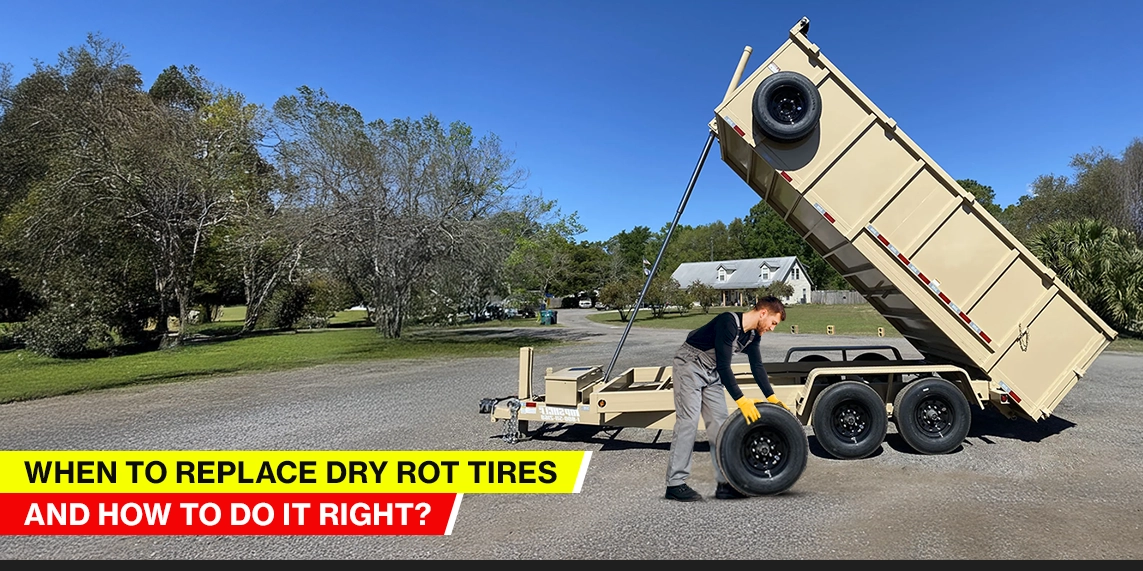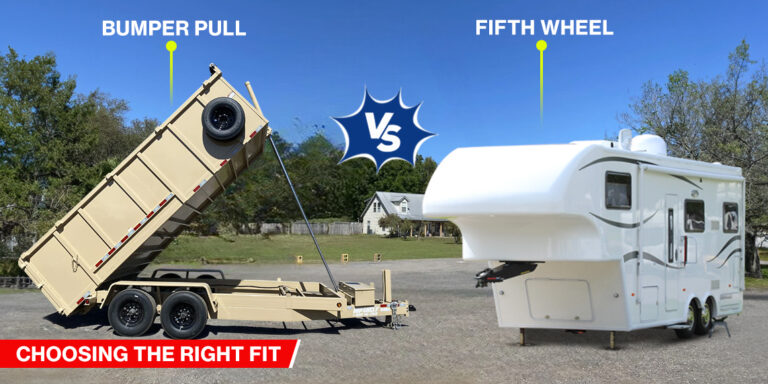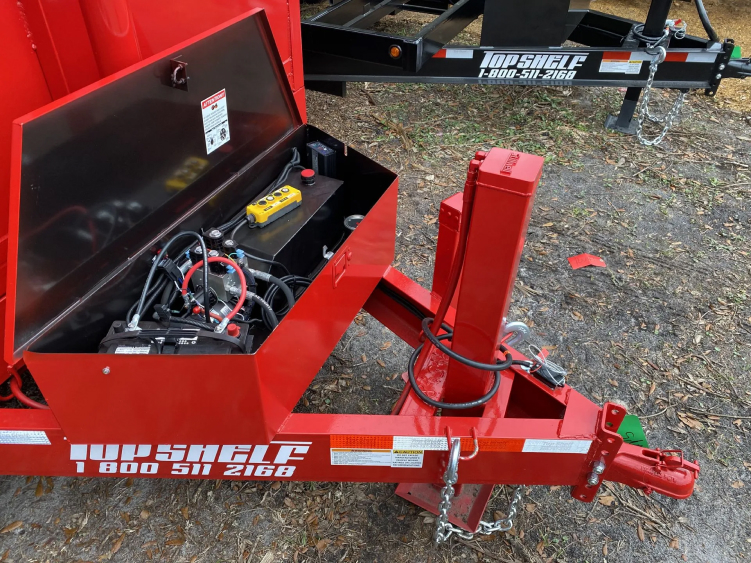Taking care of tires is more than checking how much tread remains and keeping the proper air pressure. One of the greatest dangers to tire well-being and highway safety is dry rot, which most motorists neglect.
Unlike a blowout or a flat tire, dry rot develops over time and can’t always be seen. It can silently suck the life out of your tires, even if they appear healthy on the surface. Most motorists are surprised to discover that their tires are dry-rotting if they have not been used frequently or the tread is still well-maintained.
Unfortunately, this issue occurs not only for the elderly but also for worn tires. It can happen for newer tires that were stored incorrectly, subjected to adverse weather, or subjected to harsh temperature fluctuations.
The danger is that dry rot is extremely easy to miss until it’s too late. Cracking sidewalls, worn rubber, and a hard feel may seem minor problems initially. However, it can develop into serious safety issues like reduced grip, loss of air, and even spontaneous tire failure on the road.
It’s even worse because most of the repair options are only temporary. Once dry rot has set in, the best safe option is to replace the tire completely.
If you’re not certain whether your tires are safe to drive on or if you notice signs of wear and aging, this guide is for you. We’ll tell you everything you want to know—what dry rot is, why it happens, how to detect it early, why it’s unsafe, and when to replace your tires.
Most importantly, we’ll tell you- can you drive on dry rotted tires?
By the end of this blog, you will know when to replace dry rot tires. You should also learn how to prevent it and how to act once the time has arrived to take action. This is important because acting too late will result in enormous problems for your tires.
What Is Tire Dry Rot?
Dry rot of tires, sidewall weathering, or tire ozone cracking is the slow deterioration of the rubber due to exposure and aging. It differs from rotting in organic material in that dry rot of tires has nothing to do with mold or fungi. Dry rot on tires is a chemical deterioration of the rubber.
Over time, the oils and plasticizers in the tire that maintain it soft begin to evaporate or degrade. This occurs on a large scale when the tire is exposed to agents such as UV light, ozone, heat, and moisture fluctuation.
As the process occurs, the rubber becomes hardened and loses its elasticity. This causes cracks on the surface, usually on the sidewalls or tread grooves. The tire hardens and is more likely to crack or chip, which means it is no longer elastic.
Dry rot is not just an appearance problem; it degrades tire performance. It can lead to:
- Losing traction or slipping, particularly on icy, slippery, or wet surfaces
- Increased likelihood of blowouts since the rubber is softer and
- Impaired road-holding, particularly at motorway or loaded speeds.
Dry rot is very dangerous because it will damage tires with many treads left. Although a tire may look good at first, it is still a fundamental safety risk because the tire is crumbling on the inside.
What Causes Dry Rot on Tires
Tires experience dry rot for many reasons, but the most popular cause is age. Most tires deteriorate after five or six years, even if they are not used much.
- Rubber is a natural product, and its chemical bonds start to degrade over time, making cracks easier to develop.
- Ultraviolet (UV) light exposure is also a significant one. Sunlight accelerates rubber deterioration, stripping the tire’s protective oils. Ozone, a natural gas in the air, also causes this damage, particularly in urban or industrial environments where ozone is prevalent.
- Temperature changes, especially in regions with huge seasonal changes, cause the rubber to expand and contract. This, with time, leads to cracking.
- The tire’s inactivity also hastens dry rot because the chemicals that shield it leak out when it is in use. When a tire is not used for an extended time, these oils are trapped and do not operate as they should.
- Inadequate storage—direct sunlight, moist basements, or poorly ventilated spaces—also fosters the growth of dry rot. Underinflation constantly stresses sidewalls and wears them out more rapidly.
What Are The Signs Of Tire Dry Rot?
Dry rot typically begins with subtle alterations that are difficult to perceive unless you happen to be looking for them carefully. However, the further it advances, the more apparent and dangerous the alterations become.
Early detection of the signs will prevent major issues such as blowouts or losing control of your vehicle. Below are the main sights and feel signs that indicate your tires may have dry rot.
1. One definite and serious indication of dry rot is tire sidewall cracks. These cracks could be thin lines or a web of thin cracks on the surface. They might start shallow and not easily noticeable, but over time, they will be deeper and bigger.
In later stages, these cracks can extend to the inner sides of the tire, which is a serious safety hazard. Once cracking becomes visible, tire strength is lost, and it is no longer safe to use.
2. The discoloration is a typical indication of dry rot. Sound tires will be dark black due to the oils and waxes in the rubber. The protective chemicals evaporate or break down with dry rot, and the rubber will be dull, gray, or chalky.
This fading is not just a surface problem. It shows that the tire is losing its bounce and stretch, which are both important for its workability and safety.
Apart from appearing different, the tire’s texture can also indicate dry rot. If you rub your hand across the surface of a bad tire, you may be able to detect that it feels harder or grittier than usual. At the extreme, the rubber will flake or crumble when you press on it.
This brittleness indicates that the rubber is extremely dried out and cannot bend when subjected to pressure from driving anymore. Tires like these are not simply old—they are on the verge of breaking.
If you notice these warning signs—cracks on the sidewall, faded color, and hardness in texture—you must replace the faulty tires quickly. This will help you avoid the dangers associated with dry rot.
When Is Dry Rot on Tires Dangerous?
Small surface cracks don’t signify much at first, but dry rot is very dangerous once it gets into the integrity of the tire or its air retention. Dry rot, also referred to as sidewall weathering or ozone cracking, most often occurs as small, shallow cracks on the side or tread of the tire..
These early warning signs are often not seen or considered normal wear. However, as the problem becomes more serious, the cracks will deepen and can start to reveal the inner structures of the tire, including the steel belts or fabric cords. The rubber is now so weak that it can no longer bend and perform as it should.
Once dry rot has advanced this far, the likelihood of tire failure, particularly a blowout, is significantly enhanced. This is extremely hazardous when driving at high speeds or with heavy loads, for the weight on the tire aggravates its compromised condition. A blowout on a highway can result in extreme loss of control, endangering the driver, passengers, and surrounding drivers.
Also, tires with severe dry rot can cause safety issues far before they blow. The rubber deteriorates, and drivers can notice less traction, particularly on slippery or wet roads. The car is slower to respond and can be unstable, and the stopping distance is greater. These are particularly hazardous in emergencies or adverse weather, where a speedy response is paramount.
Dry rot also affects your car’s performance and comfort level. Vibration, noise while in motion, and uneven tire wear are all possible because the rubber is breaking down. If any of these symptoms are accompanied by cracks visible on the surface, it is a clear sign that your tires are no longer safe to drive.
In short, if dry rot is severe enough to compromise air retention and tire flexibility or expose the inner framework, you must immediately replace the tire. Riding on compromised tires puts you at risk and causes problems.
Dry rot can also lead to a preventable accident that could have been avoided with prompt maintenance or replacement. Always seek the advice of a tire technician if you believe there is dry rot, and use caution when your safety is in question.
How Long Does It Take For Tires To Dry Rot?
Dry rot can be caused by a number of factors, such as the weather, how things are stored, and how often the automobile is used. Normally, tires begin to exhibit signs of dry rot five to seven years after they were manufactured. This may occur even when the tires are properly used and cared for.
However, tires exposed to extreme conditions can start to degrade much earlier, often as soon as three years. Common culprits include:
- Long Exposure to Sunlight (UV Rays): UV light promotes the deterioration of rubber compounds.
- Ozone Exposure: Prevalent in urban environments, ozone reacts with rubber and leads to cracking.
- Extreme Temperatures: Heat accelerates chemical reactions within the rubber, whereas cold temperatures make the rubber hard.
- Inadequate Storage: Tires left in the sun, heaters, or damp areas are more prone to dry rot.
- Low Use: Ironically, tires on cars driven infrequently (such as RVs, trailers, or vintage cars) tend to get dry rot more often because the rubber is not being stretched and utilized regularly.
How To Check Your Tire’s Age?
To see if your tires might be getting old and dangerous, look at the Department of Transportation (DOT) code on the sidewall of your tire. This code contains very significant information regarding when they were produced. Find the last four numbers:
The last two digits indicate the week it was produced; the previous two figures are the year.
For instance, a DOT code of 2319 would indicate that the tire was manufactured in June of that year on the 23rd week of 2019. If you read this in 2025, those tires are six years old and in danger of dry rot, although they may appear in good condition.
How To Repair Dry Rot Tires? Why Is Replacement Often Safer?
You can’t really “repair” a dry rot tire. Some products on the market claim to restore aged rubber to like-new or seal cracks, but these only alter its appearance. They don’t make the tire safe to use once again or prevent it from further breaking down.
Some drivers attempt to repair the tires temporarily using tire conditioners or sealants. These temporary solutions cannot be applied while driving long distances or at high speeds. A tire might look better on the outside but weak inside.
Finally, replacing the dry rot on tires is the most responsible and safest option. Continued operation is risky due to blowouts, loss of control, and decreased handling. If you are unsure, have a certified technician check the tires, but in most instances, apparent dry rot requires immediate replacement.
When To Replace Dry Rot Tires?
Dry rot repairs must be done immediately when you see clear symptoms of dry rot. Waiting too long may result in unsafe driving conditions, including the risk of a blowout or loss of control of the vehicle. Knowing when and how to change trailer tires is important to remain safe and keep the vehicle running well.
One of the most apparent indications that you require a new tire is when you notice cracks on the sidewall or tread. The cracks can start tiny but will develop and spread as time passes, weakening the tire. After cracks appear, the possibility of the tire failing is much greater.
Another clear sign is a change in the tire’s color, especially if the surface is brittle. When the oils in the rubber break down, the tire is no longer black but dull, gray, or faded. This is usually a sign that the rubber has dried up and is more likely to crack and break.
Tires that are very hard, flaky, or crumble on compression must be replaced immediately. These tires cannot offer the flexibility and resilience necessary for safe driving. Brittleness indicates that the tire is no longer functional and possibly cannot endure the stresses of everyday road use.
Another warning sign of dry rot is difficulty maintaining the proper air pressure. If your tires constantly lose air but you cannot find any leaks, the cause might be dry rot. Soft rubber and cracks allow air to seep out gradually, which can destroy tire performance and fuel efficiency.
Lastly, even if you don’t see any damage, tires that are more than six years old must be inspected and replaced. Rubber does deteriorate with age, and dry rot can develop even if the tires are not used much. Check the date of manufacture, usually marked on the sidewall, to find out how old your tires are.
If one tire appears to have dry rot, it’s generally best to replace all four—if they’re about the same age. When tires deteriorate unevenly, handling can be tricky, extra stress on the suspension can occur, and overall driving performance can decrease. All tires are in good shape and maintain stability and safety in all driving situations.
Prevention of Dry Rot in Tires
Taking care of your tires will extend their lifespan and make you a safer driver. Dry-rotted tires will just burst apart unexpectedly, and you may lose control of your vehicle and experience accidents. Also, replacing tires too early because of damage you might have avoided can be expensive.
While you can’t prevent tires from aging, there are several key methods of retarding dry rot and maintaining tires in good health:
1. Drive Frequently To Maintain Flexible Tires
Among the best ways of achieving soft tires and preventing dry rot is frequent driving of your vehicle. Tire companies state that chemicals and oils in the rubber move and settle over time, hardening the tires and creating cracks. Driving will ensure the oils are spread evenly within the tire, making it flexible and strong.
Tip: If your vehicle will not be driven for a prolonged period, attempt to run it at least once every two or three weeks. Even brief runs keep the tires pliable and prevent flat spots from developing.
2. Proper Storage: Dark, Cool, And Dry
Conditions are critical to prevent dry rot for tires or spare tires that must be stored. Exposure to UV light, ozone, and extremely high or extremely low temperatures accelerates tire rubber degradation.
- Storage conditions: Store tires indoors in a temperature-controlled environment, out of direct sunlight and water. The ideal is a dark, dry, and cool place.
- For parking outdoors, Use high-grade tire covers that are UV-proof, rain-proof, and resistant to dirt and other external factors.
3. Maintain Correct Tire Inflation
Under– or over-inflation causes tires to wear out prematurely and puts rubber compounds under unnecessary stress, accelerating dry rot growth.
- Monitor tire pressure every month: Use a quality tire pressure gauge and inflate tires to the manufacturer’s recommended levels. This information can be found in the owner’s manual or on the driver’s door jamb.
- Seasonal fluctuations: Remember to inspect and control tire pressure whenever the climatic patterns change, as temperature changes influence tire air pressure.
4. Periodically Inspect And Wash Tires
Regular visual inspections can detect the early signs of dry rot, such as discoloration, tiny cracks, or brittleness before they become an issue.
- Examine the sidewalls and tread: Inspect them closely for damage or cracks whenever you fill up or wash your vehicle.
- Mild washing: Wash tires regularly with water and soap to remove dirt, brake dust, and grime. Never use intense chemical washes or oil-based cleaners, as they will strip away the protective oils from the rubber.
- Use the proper dressings: Use a water-based, petroleum-free tire dressing after cleaning them. These dressings enhance the rubber, add water, and give extra protection against UV and ozone.
5. Prevent Long-Term Exposure To Harsh Conditions
- Restrict sun exposure: Whenever it is possible, park in a shaded part or garage. Direct sunlight gradually accelerates rubber deterioration.
- Avoid tires from ozone-generating areas: Electric motors and high-voltage equipment generate ozone. Avoid tires from being in contact with these devices to reduce the likelihood of cracking.
Trust Top Shelf Trailers to Deliver Quality
Dry rot is a subtle but troublesome tire condition that can turn a quality tire into a safety risk. It happens gradually, but periodic check-ups on your tires, proper care, and replacement at the appropriate time will prevent you from working with it.
So, when to replace dry rot tires, you wonder? Should you see evidence of dry rot—cracking, discolored or faded rubber, or brittle rubber—take notice. Do not wait until a blowout has been experienced before you act. Replacing dry rot tires quickly is in your best interest for safety and peace of mind.
Don’t risk your safety if you notice dry rot or it’s time to replace some tires. Top Shelf Trailers recognizes that quality tires are extremely crucial to safe and efficient towing. That’s why they stock a complete selection of quality trailer tires for long-lasting performance—and skilled assistance to help you choose the right one for your application.
Whether buying replacement dry-rotted tires or equipping a new trailer, their team wants to provide premium trailer maintenance before you hit the road. Stop by Top Shelf Trailers today and check out their top-rated trailers—where strength and quality meet every time.




